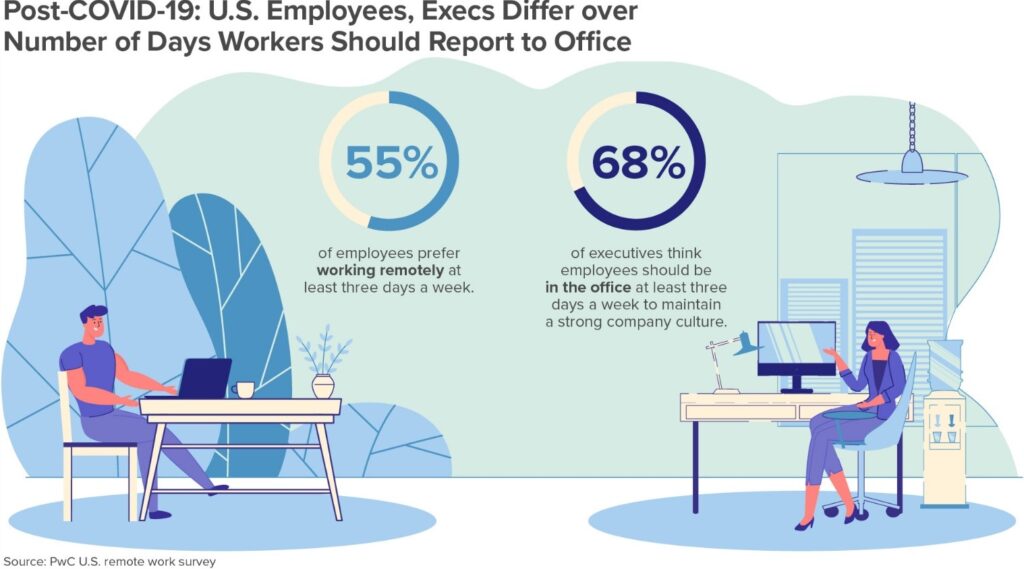In the rapidly evolving employment landscape, staying ahead of the curve is crucial for organizations aiming to attract and retain top talent. Workforce insights have become an indispensable tool for navigating labor market complexities, enabling businesses to anticipate and respond to key employment trends. As businesses move into 2025, understanding how workforce insights can inform recruitment and retention strategies is more vital than ever. These insights not only provide a data-driven understanding of the labor market but also equip organizations with actionable strategies to tackle challenges like skill shortages, economic uncertainties, and shifting workforce dynamics. For companies in the corporate and technology sectors, leveraging these insights is essential to maintaining a competitive edge.

Top Employment Trends to Watch out in 2025
The employment landscape is shaped by multiple factors, from technological advancements to changing employee expectations.

Source: PWC
Here are some key trends to watch for:
1. The Rise of Remote and Hybrid Work:
Remote work has become a cornerstone of modern employment, with hybrid roles offering the flexibility employees demand. By 2025, it is predicted that over 50% of knowledge workers will operate in a hybrid capacity. Workforce insights can help organizations gauge employee preferences and productivity metrics, ensuring seamless transitions between in-office and remote setups.
2. Expansion of the Gig Economy:
As the gig economy continues to grow, fueled by technological advancements and shifting workforce priorities, companies need to adopt more agile hiring models. Workforce intelligence tools provide actionable data to identify gig workers with specialized skills, bridging gaps in project-based roles.
3. Focus on Diversity, Equity, and Inclusion (DEI):
The growing focus on DEI initiatives highlights the importance of fostering inclusive workplaces. Employment trends for 2024 indicate that diverse teams drive innovation and profitability. Leveraging workforce insights can help organizations measure diversity metrics and create targeted strategies to enhance representation across all levels.
4. Upskilling and Reskilling:
Rapid technological advancements necessitate continuous learning. Employment trends for 2024 show a growing emphasis on upskilling initiatives to address skill shortages. Workforce insights offer a clear picture of skill gaps within organizations, guiding investments in training programs that align with future demands.
5. Economic Uncertainty and Adaptive Strategies:
Fluctuating economic conditions require businesses to remain agile. Predictive analytics within workforce intelligence platforms enable companies to forecast hiring trends for 2024, optimizing workforce planning in response to market shifts.
How Workforce Insights Predict Labor Market Changes?
Workforce insights are invaluable for organizations seeking to stay proactive in the face of shifting labor market dynamics. These insights allow businesses to predict and adapt to changes with confidence.
1. Real-Time Labor Market Analysis:
Workforce intelligence tools aggregate and analyze labor market data, offering real-time insights into employment trends. This enables organizations to stay informed about industry workforce intelligence and adapt their strategies accordingly.
2. Predictive Hiring Models:
Leveraging workforce insights, companies can develop predictive models to forecast hiring needs. This ensures timely recruitment of talent equipped with in-demand skills, reducing time-to-fill metrics and enhancing overall workforce efficiency.
3. Addressing Talent Shortages:
Employment trends for 2024 highlight talent shortages in fields like technology and healthcare. Workforce insights empower businesses to identify potential talent pools and refine outreach efforts, ensuring access to high-quality candidates.
4. Data-Driven Retention Strategies:
High turnover rates can disrupt business continuity. By analyzing workforce data, organizations can pinpoint attrition risks and implement tailored retention initiatives, fostering a more stable and engaged workforce.
How Data Insights Help Address Workforce Challenges?
Addressing challenges like skill gaps, talent shortages, and economic uncertainties requires a strategic approach. Here are some actionable strategies:
1. Bridging Skill Gaps
- Challenge: Rapid technological evolution has widened skill gaps across industries.
- Strategy: Conduct comprehensive skills audits using workforce intelligence tools to identify areas requiring upskilling. Partner with educational institutions to design targeted training programs.
2. Navigating Talent Shortages
- Challenge: Demand for specialized roles often outpaces supply.
- Strategy: Expand recruitment channels by leveraging global talent marketplaces. Utilize predictive analytics to forecast future demand and proactively source candidates.
3. Managing Economic Uncertainty
- Challenge: Market volatility affects hiring budgets and workforce stability.
- Strategy: Adopt flexible staffing models, such as contingent workforce solutions. Use employment trends insights to align workforce planning with economic forecasts.
Best Practices for Adapting Recruitment and Retention Tactics
In the face of evolving employment trends, adapting recruitment and retention strategies is essential for business success. Here’s how organizations can stay ahead:
1. Tailor Recruitment Approaches
- Leverage industry workforce intelligence to identify emerging talent hubs.
- Optimize job postings using keywords such as “employment trends 2024” and “hiring trends 2024” to attract relevant candidates.
- Implement AI-driven tools for candidate screening to improve hiring efficiency.
2. Enhance Employee Engagement
- Use workforce insights to develop personalized career growth plans.
- Foster transparent communication about company goals and employee contributions.
- Incorporate feedback mechanisms to address employee concerns proactively.
3. Promote Flexible Work Arrangements
- Develop policies that support remote and hybrid work preferences.
- Equip employees with the necessary tools and training to excel in flexible environments.
- Monitor productivity metrics through workforce intelligence platforms to ensure alignment with organizational objectives.
4. Strengthen Employer Branding
- Highlight commitment to DEI and sustainability initiatives in employer branding efforts.
- Showcase employee testimonials and success stories to attract top talent.
- Use workforce insights to identify and address gaps in employee satisfaction, reinforcing a positive employer image.
Conclusion
As employment trends continue to evolve, harnessing the power of workforce insights is no longer optional for organizations aiming to thrive in a competitive market. By leveraging data-driven strategies, companies in the corporate and technology sectors can anticipate labor market changes, address skill gaps, and navigate economic uncertainties with confidence. Embracing workforce intelligence not only optimizes recruitment and retention efforts but also positions businesses as leaders in an increasingly dynamic employment landscape. As 2025 approaches, the ability to adapt and innovate will define success, making workforce insights a critical asset for forward-thinking organizations.
To stay ahead in this ever-changing environment, Sign up on JobsPikr and unlock actionable workforce insights tailored to your industry needs.



